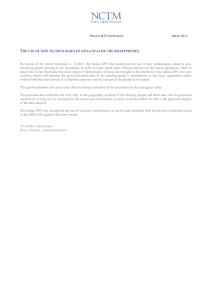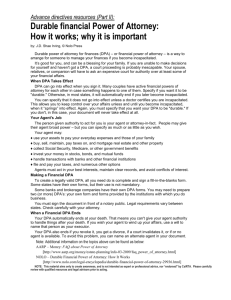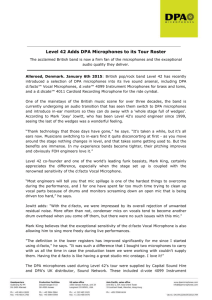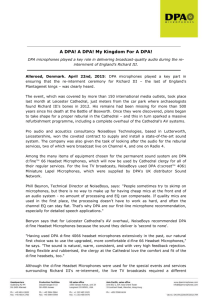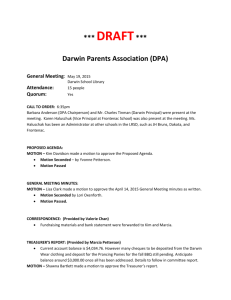Status of Daily Physical Activity (DPA) in Ontario Elementary School
advertisement
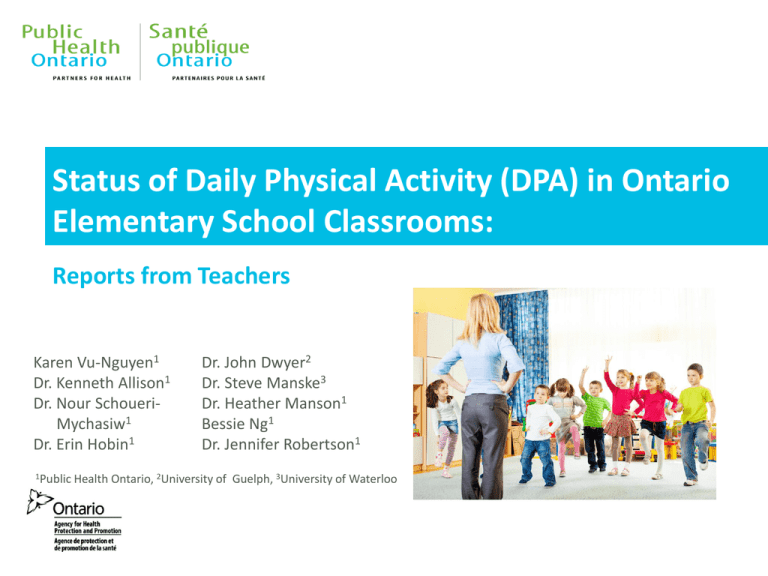
Status of Daily Physical Activity (DPA) in Ontario Elementary School Classrooms: Reports from Teachers Karen Vu-Nguyen1 Dr. Kenneth Allison1 Dr. Nour SchoueriMychasiw1 Dr. Erin Hobin1 1Public Dr. John Dwyer2 Dr. Steve Manske3 Dr. Heather Manson1 Bessie Ng1 Dr. Jennifer Robertson1 Health Ontario, 2University of Guelph, 3University of Waterloo Introduction • Ontario Ministry of Education implemented DPA policy (2005) • Study aims to identify: • All elementary school students (grades 1-8) • Extent of DPA implementation in schools/classrooms across Ontario • 20 minutes • School/classroom-level factors associated with implementation • Sustained moderate to vigorous physical activity • Preliminary findings: time • During instructional • •Select associated with DPA implementation Eachfactors schoolpotentially day • Based on teacher survey data PublicHealthOntario.ca 2 Methods • Cross-sectional study – online survey questionnaire • Questions related to DPA implementation and factors potentially associated with implementation • Grade 3, 5 and 7 teachers • Random sample of Ontario elementary schools • Data collection to be completed by end of June 2014 • Preliminary descriptive data analysis • 139 responses to the survey PublicHealthOntario.ca 3 Preliminary Findings Respondent Characteristics Gender Male: 25.2% Female: 74.8% Years as a Teacher ≤ 5 years of experience: 15.3% 6-15 years of experience: 47.4% ≥ 16 years of experience: 37.2% PublicHealthOntario.ca Teaching Grade Grade 3: 34.1% Grade 7: 26.7% Grade 5: 34.1% Other: 5.2% Level of Health/Phys. Ed. Training Little to no training: 77.3% University level training: 10.3% Other training: 12.4% 4 Preliminary Findings How often do teachers use DPA resources and supports for planning, implementing and/or monitoring DPA? Frequency of using DPA supports Frequency of using DPA resources 1.4% 6.5% 10.1% 31.7% 30.9% Never use Rarely use Occasionally use Often use Always use 25.9% Frequency of communicating with local PHU 37.4% 28.8% Never use Rarely use Occasionally use Often use Always use 27.3% 1.4% 7.2% Never Rarely Occasionally Often Always 17.4% 74.0% PublicHealthOntario.ca 5 Preliminary Findings What are barriers identified by teachers to implementing DPA? Barriers to implementing DPA 90.0 80.0 Strongly agree Agree Percentage of teachers who responded (%) 70.0 60.0 48.9 53.8 50.0 35.2 40.0 20.8 30.0 20.0 32.8 10.0 24.2 29.7 23.8 6.3 32.3 10.6 14.1 9.2 11.0 25.8 21.9 11.4 24.6 15.0 11.4 7.0 10.1 0.0 Lack of time Competing curriculum priorities Lack of space Lack of Lack of equipment teacher readiness Lack of school board support Bad weather Lack of Students' Lack of Lack of resources reluctance amenities parent/ to guardian participate support Types of barriers PublicHealthOntario.ca 6 Next Steps • Complete data collection (end of June 2014) • Conduct full analysis to examine: • Extent of DPA implementation in schools/classrooms across Ontario • Influence of school/classroom-level factors on implementation • Report to Ontario Ministry of Education • Summary of findings • Recommendations for how the policy may be strengthened • Other knowledge translation products PublicHealthOntario.ca Thank you! karen.vu-nguyen@oahpp.ca 7
